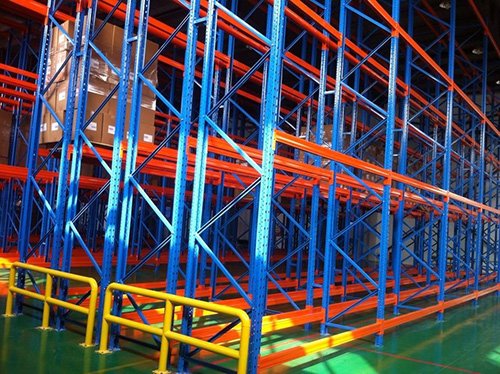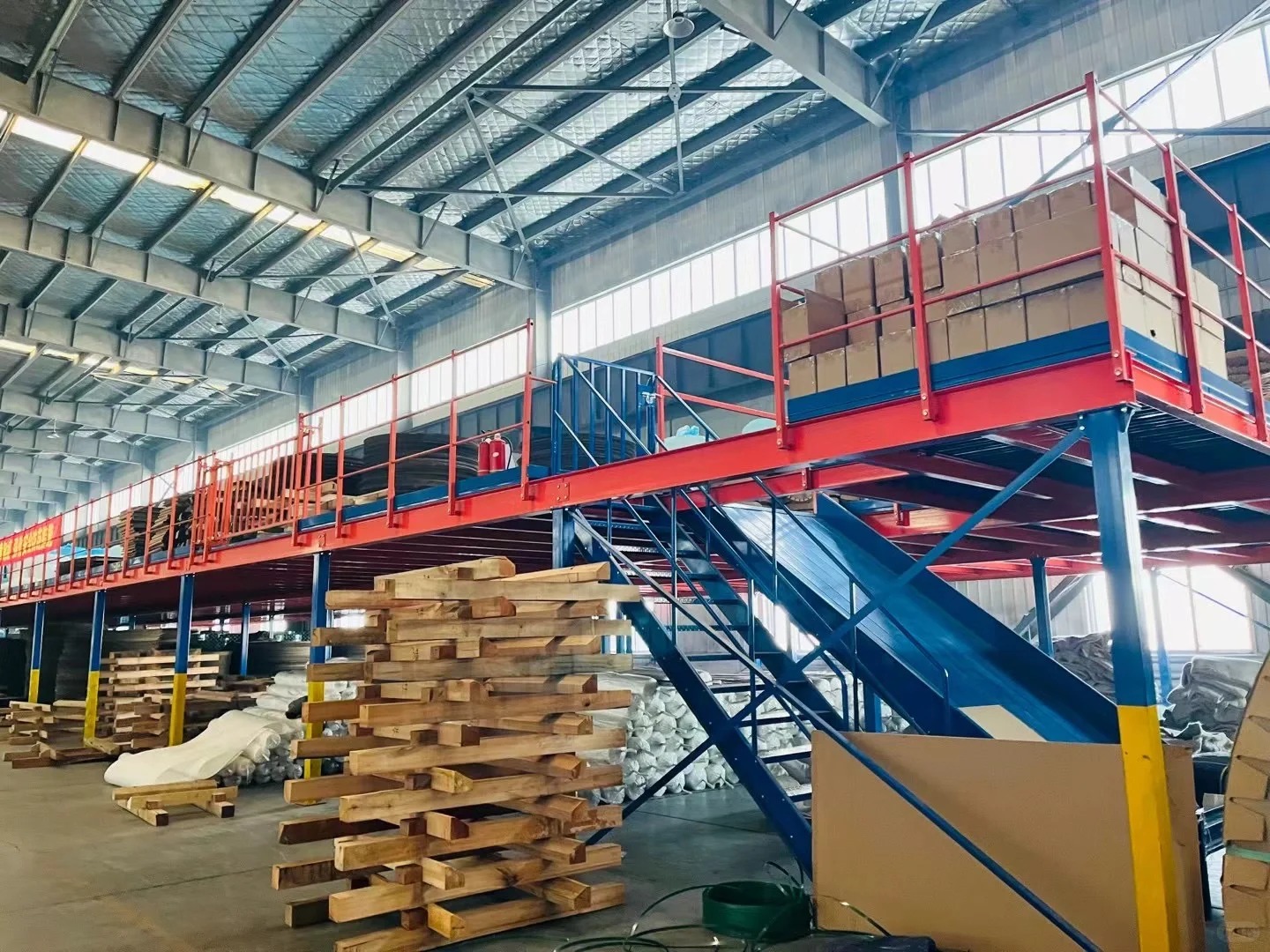In the dynamic world of warehousing and logistics, efficiency and cost-effectiveness are paramount. While automated storage and retrieval systems (AS/RS) and other high-density solutions grab headlines, conventional racking remains the bedrock storage system for countless operations worldwide. Its enduring popularity stems from its fundamental simplicity, versatility, and cost-efficiency. This comprehensive guide delves deep into conventional racking, exploring its essential characteristics, configurations, advantages, limitations, and ideal applications, providing the insights needed to determine if it's the right solution for your storage challenges.

Understanding Conventional Racking: The Backbone of Warehousing
At its core, conventional racking refers to the most common type of adjustable pallet racking system. It's characterized by a framework of vertical upright frames connected by horizontal load beams, creating multiple levels of storage lanes. Pallets are stored on these beams, typically one pallet deep per bay facing the aisle. This design provides direct access to every single pallet stored, making it highly versatile for operations handling a diverse range of SKUs (Stock Keeping Units) with varying turnover rates. The term "conventional racking" distinguishes this ubiquitous, accessible system from more specialized high-density storage solutions like drive-in, push-back, or pallet flow racks.
Core Design and Components of Conventional Racking
The strength and functionality of conventional racking lie in its well-engineered components:
Upright Frames: These are the vertical support structures, typically constructed from heavy-duty rolled steel. They come in various heights, depths (front-to-back dimension), and capacities. Uprights feature punched holes or slots at regular intervals (usually 75mm or 3" vertically) along their entire height. These holes allow for the adjustable placement of beams.
Load Beams: Horizontal members that span between two upright frames, forming the support shelves for pallets. Beams hook into the holes on the uprights using specially designed connectors. They come in different lengths (bay widths) and depths (front-to-back), designed to support specific pallet sizes and weights. Beam depths must adequately support the pallet, typically requiring 2-3 inches of overhang per side.
Pallet Supports/Wire Decking: While pallets can sit directly on beams for some applications, pallet supports or wire mesh decking are often used. Decking provides a stable surface, prevents pallets from falling through, improves safety, and can help distribute loads more evenly. It also allows for the storage of smaller, non-palletized items on rack levels.
Row Spacers and Braces: These components connect adjacent rows of racking back-to-back, enhancing overall system stability and resistance to lateral forces (like seismic activity or forklift impacts). Diagonal and horizontal braces within the upright frames also contribute significantly to structural integrity.
Footplates: Attached to the base of uprights, footplates are anchored securely to the concrete floor using specialized anchor bolts. This anchoring is absolutely critical for the safety and stability of the entire conventional racking system, preventing tipping or collapse.
Shims: Used to level the racking system on uneven floors, ensuring beams are level and loads are properly supported.

Key Features and Operational Characteristics
Conventional racking offers a distinct set of operational features that define its use:
Direct Accessibility (Selective Pallet Access): This is the defining feature. Every pallet stored within a conventional racking system is directly accessible from the main aisle. No pallet needs to be moved to access another. This enables First-In-First-Out (FIFO) inventory management and is ideal for high-SKU environments where any item might need to be retrieved at any time.
Adjustability: The beam levels are easily repositioned vertically by unhooking them and moving them to different sets of holes on the uprights. This allows for incredible flexibility to accommodate pallets of varying heights, maximizing vertical space utilization as inventory profiles change.
High Visibility: The open structure of conventional racking provides excellent visibility throughout the warehouse, aiding in inventory management, cycle counting, and safety inspections.
Ease of Installation and Reconfiguration: Compared to more complex systems, conventional racking is relatively straightforward to install and, crucially, easy to reconfigure. Aisles can be widened or narrowed, sections can be added or removed, and beam heights adjusted without major disruption. This scalability is a major advantage for growing businesses.
Compatibility: Conventional racking is designed to work seamlessly with a wide range of standard material handling equipment (MHE), primarily counterbalance forklifts, reach trucks, and order pickers. The aisle width is a critical design factor determined by the turning radius of the chosen MHE.
Common Configurations and Variations
While the fundamental principle remains the same, conventional racking can be implemented in several configurations to suit specific needs:
Single-Row Selective Racking: The most basic form. Uprights are installed as single rows, each with beams on one or both sides facing an aisle. This maximizes accessibility but has the lowest storage density.
Double-Row Selective Racking (Back-to-Back): The most common configuration. Upright frames are placed back-to-back, sharing a common base plate and often connected by row spacers. Beams extend from both sides of the double row, creating storage lanes facing aisles on either side. This configuration is highly space-efficient while retaining full selective access.
Single-Deep vs. Double-Deep: True conventional racking is typically single-deep (one pallet deep per storage position facing the aisle). However, a variation exists called Double-Deep racking. This uses longer fork forklifts (usually reach trucks with telescoping forks) to store pallets two deep. While it improves density over single-deep, it sacrifices direct access to the rear pallet – accessing the back pallet requires moving the front one first. It's often considered a middle ground between conventional racking and higher-density systems.
Cantilever Racking: While technically distinct, cantilever racking often integrates within or alongside conventional racking systems. It uses vertical columns with horizontal arms extending outwards, ideal for storing long, bulky items like lumber, piping, or furniture that don't fit easily on standard pallet racks.
Advantages and Benefits of Conventional Racking
The widespread adoption of conventional racking is no accident; it delivers significant advantages:
Cost-Effectiveness: Conventional racking generally has the lowest initial investment cost per pallet position compared to automated or high-density systems. The components are standardized, and installation is less complex.
Unmatched Flexibility & Scalability: The adjustable nature makes it incredibly adaptable to changing inventory needs. Adding new SKUs, handling different pallet sizes, or expanding the warehouse footprint is relatively straightforward. This flexibility is a core reason conventional racking remains vital.
Ease of Use and Accessibility: Forklift operators find conventional racking intuitive to work with. Direct access simplifies put-away and retrieval processes, reducing handling time per pallet and minimizing the potential for errors or product damage.
High Visibility & Simplified Inventory Management: The open structure allows for easy visual inspection of stock levels and product conditions. Cycle counting and stock audits are significantly easier than in closed or high-density systems.
Durability and Longevity: Constructed from robust steel and properly maintained (including regular inspections), a conventional racking system can provide decades of reliable service. Its modular nature also means damaged components can often be replaced individually.
Wide Equipment Compatibility: Works efficiently with standard, readily available warehouse forklifts (counterbalance, reach trucks), avoiding the need for specialized, expensive MHE.
Limitations and Considerations
While highly versatile, conventional racking is not the ultimate solution for every storage challenge. Key limitations include:
Lower Storage Density: Compared to drive-in, push-back, pallet flow, or AS/RS, conventional racking (especially single-deep) requires more aisle space per pallet stored. This results in a lower overall storage density within the same cubic warehouse space. Maximizing height utilization is crucial to offset this.
Aisle Space Requirements: The need for wide aisles to accommodate forklift maneuvering is the primary factor limiting density. Aisle width is dictated by the type of MHE used (reach trucks require narrower aisles than counterbalance forklifts).
Floor Space Utilization: The combination of aisles and the structure itself means conventional racking uses more square footage per pallet than high-density alternatives. Warehouses with extremely expensive real estate might find this prohibitive.
Potential for Damage: Forklift collisions with uprights or beams are a significant risk in busy warehouses, potentially causing costly damage and safety hazards. Proper operator training, rack protectors (column guards, rack guards), and clear aisle markings are essential mitigation strategies.
Safety and Compliance: Proper design, installation, and anchoring by qualified professionals are non-negotiable. Overloading beams, exceeding the system's capacity, or improper use can lead to catastrophic failure. Regular safety inspections are mandated in most jurisdictions (e.g., following SEMA guidelines in the UK or OSHA/ANSI standards in the US). Load signs clearly indicating the maximum load per level and per bay must be displayed.
Ideal Applications for Conventional Racking
Understanding where conventional racking shines is key to selecting the right system:
Warehouses with High SKU Variety: Perfect for distribution centers, wholesale suppliers, and manufacturers storing thousands of different products. Direct access is essential for picking diverse orders.
Operations Requiring FIFO Inventory Management: Industries like food and beverage, pharmaceuticals, or chemicals often mandate FIFO. Conventional racking naturally supports this.
Facilities with Variable Turnover Rates: When some SKUs move quickly while others are slow-moving, the flexibility to store them together efficiently is a major advantage of conventional racking.
Warehouses Needing High Accessibility: Operations focused on fast order fulfillment, cross-docking, or frequent replenishment benefit immensely from the instant access to every pallet.
Businesses Prioritizing Flexibility and Scalability: Startups, growing businesses, or operations anticipating changes in product lines or volumes find the adaptability of conventional racking invaluable.
Budget-Conscious Operations: Where maximizing pallet positions per dollar invested is a primary concern, especially in the initial setup phase, conventional racking often presents the most economical solution.
Despite the proliferation of sophisticated automated solutions, conventional racking continues to be the workhorse of the warehousing industry. Its fundamental strengths – direct accessibility, exceptional flexibility, ease of use, cost-effectiveness, and compatibility with standard equipment – ensure its relevance for a vast array of applications. While it may not offer the absolute highest storage density, its operational advantages and adaptability make it an indispensable solution for warehouses handling diverse inventories, requiring frequent access, or needing a scalable and budget-friendly storage foundation. When designed, installed, and maintained correctly, adhering strictly to safety standards, a conventional racking system provides a robust, reliable, and highly efficient backbone for warehouse operations for years to come. Evaluating your specific inventory profile, throughput requirements, space constraints, and budget will determine if conventional racking is the optimal choice for maximizing your storage efficiency.







